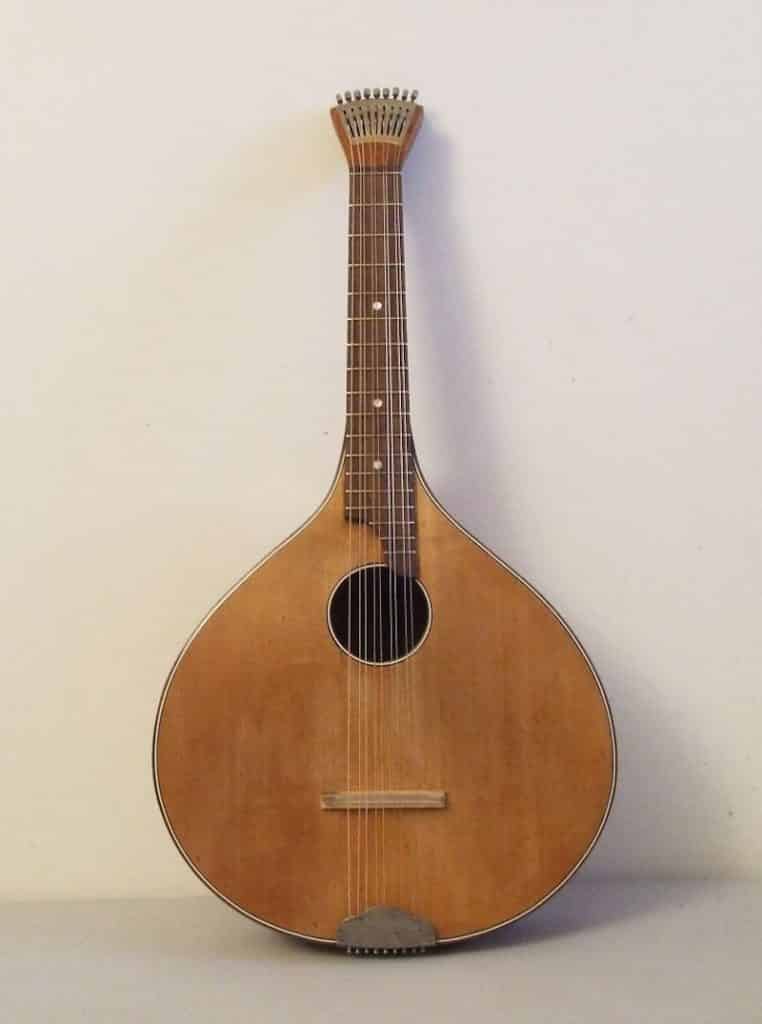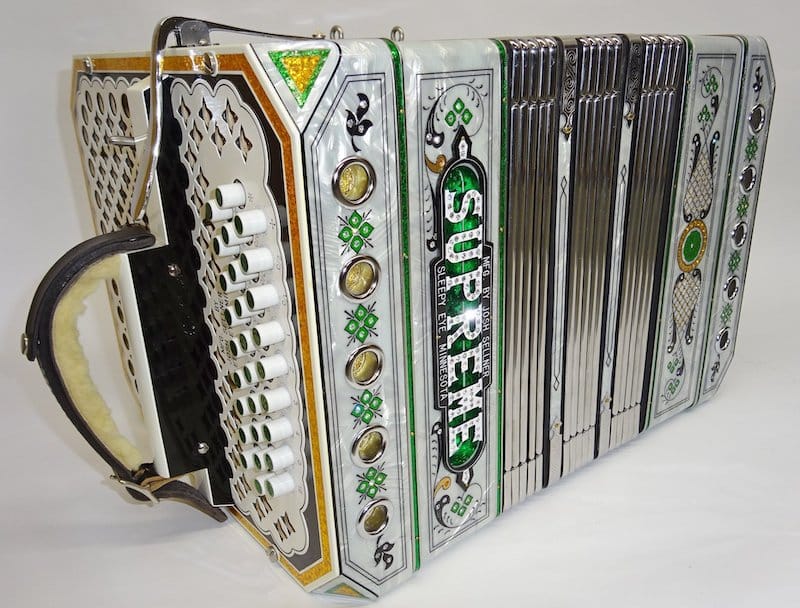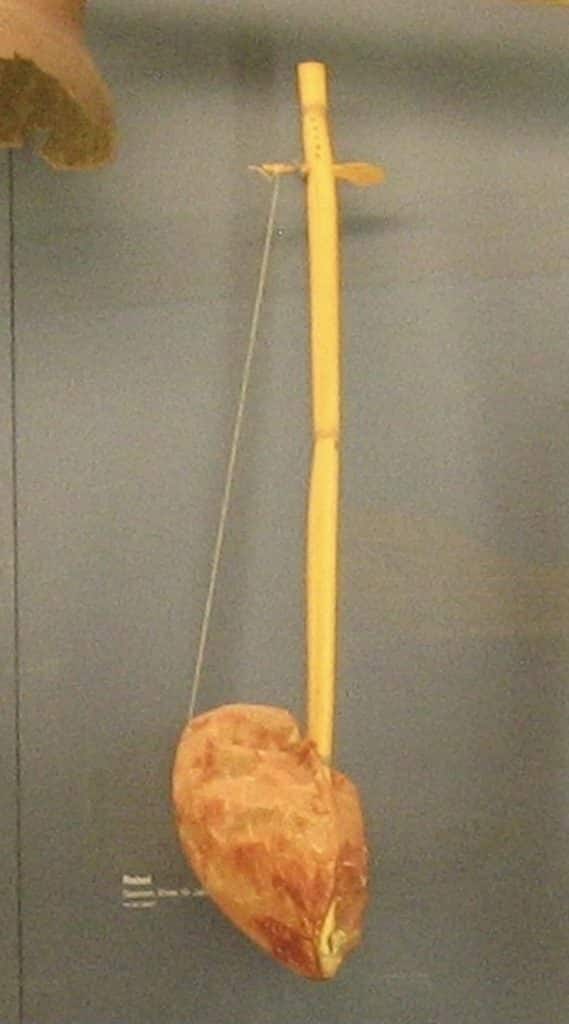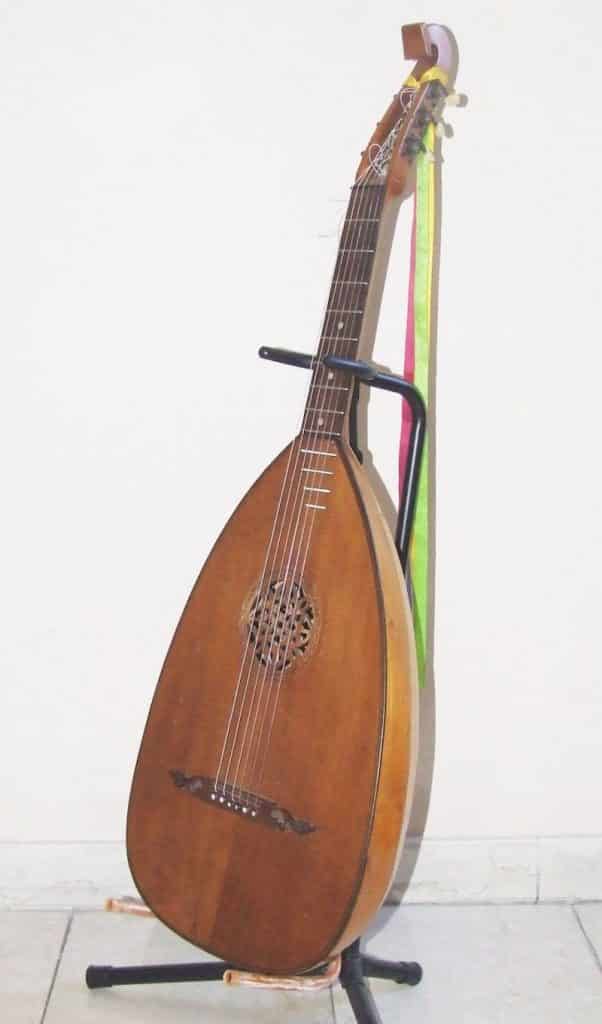German musical instruments vary wildly. Though many are string instruments, Germany also has its share of brass and percussion instruments. It even has a variation on the bagpipes.
These instruments go in and out of vogue like fashions. And some went on to invent newer instruments that took their place. Here are some of the most interesting German instruments.
1. Accordion
The first instrument we’ll look at is the accordion which occupies a prominent position in lots of German folk music.
To play it, the musician manipulates the accordion’s connective bellows while pressing keys with the right hand and buttons with the left.
There are two types of accordion in German music:
- Steirische Accordion
- Schwyzerörgeli Accordion
But the most prevalent of these two instruments is the Schwytzerogeli Accordion which is affectionately called the ‘little organ’.
Just as opening and closing different church organ pipes produce different tones and sounds, pushing and pulling the bellows on a Schytzerogeli Accordion gives the music a significantly different sound.
2. Zither
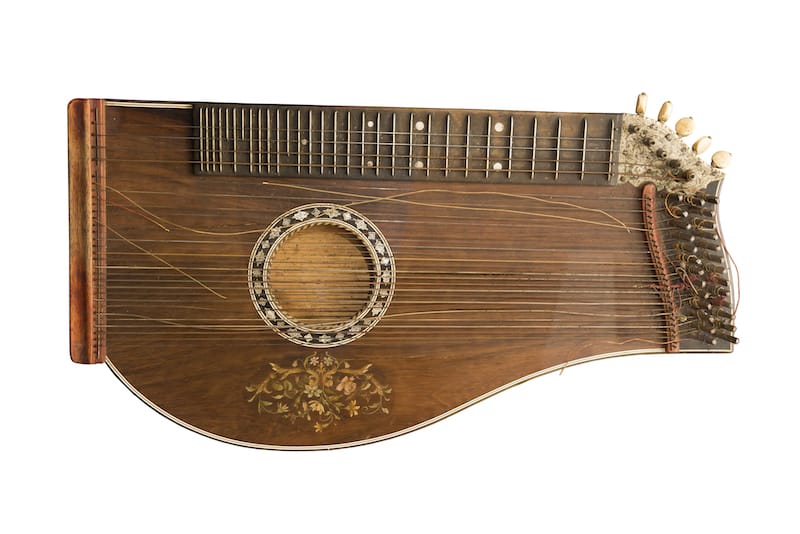
Another musical instrument integral to German folk music, the zither, combines the harp with the guitar but is classified as a piano.
The zither’s strings stretch across a fretboard with five strings that are plucked using the left hand.
The harp-influenced part of the zither has 37 strings and needs players to pat their heads and rub their stomachs while playing.
Well, not really.
But the right-handed zither part requires dexterity because the thumb must independently play the melody and bass parts while the remaining fingers play everything else.
And pianists thought their instrument was challenging!
The zither took a turn for stardom when, in 1949, Anton Karas used it to play the musical theme for villain Harry Lime in The Third Man.
Only the cat liked Harry Lime, but the world fell in love with the zither.
3. Waldzither
The waldzither which in German translates to ‘Forest zither’, is closely related to the cittern – a type of Renaissance-era musical instrument.
It has a boxed neck and strings that the player strums or plucked with the
Finger positions along the neck alter the chords, much like when playing a lute or guitar.
Believed to be created in Thuringia, it was the instrument of craftsmen and miners and was made famous in the 16th century by theologian and musician Martin Luther.
His playing of the instrument was such that it’s sometimes called the Lutherzither by players.
Its popularity across Germany made the waldzither the country’s national instrument and integral to German folk music.
4. Huemmelchen (Hümmelchen)
The Huemmelchen or Hümmelchen is a small German bagpipe.
This musical instrument comprises a series of pipes, drones, and an inflatable bag that is sometimes made out of animal skin.
Because of the mild drone or buzz this musical instrument produces, the huemmelchen sometimes gets translated as “little bumblebee.”
The German for bumblebee hummel and the diminutive “chen,” is affectionately used to convey a sense of littleness or smallness.
The huemmelchen dates back to Renaissance Europe and perhaps for that reason it enjoys the distinction of being played using recorder fingering.
Like other baroque instruments, it’s also smaller and quieter than more modern equivalents, making it well-suited for indoor pipe playing and harmonizing with other instruments.
It fell into obscurity after the Baroque era ended but was rediscovered and revived in the 1970s, and now is a vital part of German music.
5. Mandolin
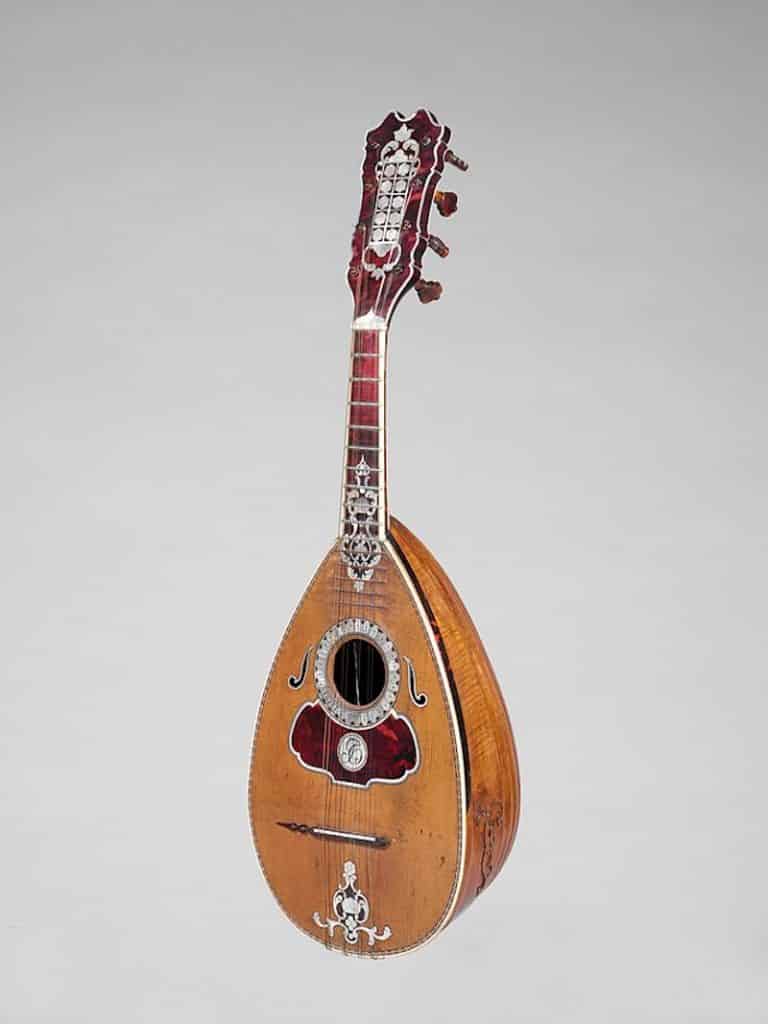
The mandolin is another German instrument with medieval associations.
Long-necked and strung, the mandolin is part of the lute family with its teardrop-shaped soundbox making it distinctive from the lute.
Despite its prevalence in German music, perhaps the mandolin’s best-known composers were Antonio Vivaldi and Amadeus Mozart.
Vivaldi wrote a concerto for the mandolin, while Mozart’s mandolin serenade is perhaps the most memorable musical moment of his opera Don Giovanni.
But the mandolin is a flexible instrument and now features prominently in American bluegrass and Baroque-style playing.
6. Chemnitzer Concertina
German violin maker Carl Friedrich Uhlig invented the Chemnitzer Concertina in 1834 after becoming frustrated by the accordion’s limitations.
Uhlig invented his concertina in Chemnitzer, which is how the instrument got its name.
To the casual observer, the Chemitzer concertina looks like an accordion. However, there are several key differences.
The primary one is that while an accordion has one keyboard on the right-hand side of the instrument, the Chemnitzer concertina has two, one for each hand.
Additionally, an accordion can play chords, but the Chemnitzer concertina plays one droning note at a time.
7. Bladder Fiddle (Poispil or Bumbass)
The name bladder fiddle is literal because the instrument consists of an inflated bladder tied to a stick and is played by being bowed.
Because of the construction of the bumbass, it’s a single-string instrument.
Players bow it while standing upright and drawing the bow over the string.
More modern bladder fiddles, especially in Germany, have a percussive bell or symbol at the top.
The addition improves the instrument’s appearance and creates a superior acoustic sound for the audience.
The bumbass got yet another new look during World War One.
During the war, soldiers replaced the bladder with the more intimidating tin can.
They also exchanged the standard bow for one with notches.
8. Tuba
Today tubas are the favorite bass instrument of the modern orchestra.
It was invented by Wilhelm Friedrich Wieprecht and Johann Gottfried Moritz in 1835.
Wieprecht was a bandmaster, and Moritz invented musical instruments.
The resulting bass tuba or tuba had five valves that slid, keyed to F major, and featured a prominent conical bore.
The valves were a revelation for brass players, and as the tuba caught on, there was an uptick in valved brass instruments with new and improved tuning.
Inspired by the tubular shape of their instrument, Wieprecht and Moritz named it after the Latin word for ‘tube.’
9. Scheitholt (Scheitholz)
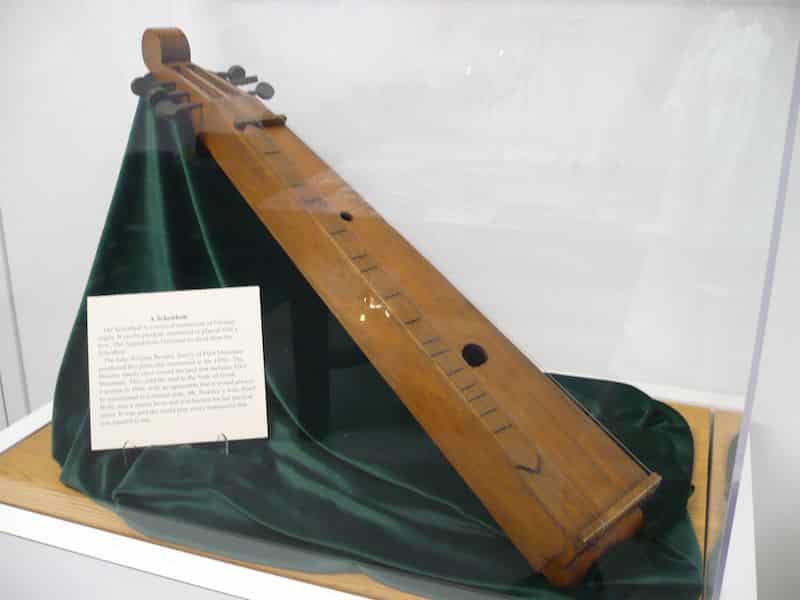
The Sheitholt is the ancestor to the modern-day zither.
However, in appearance, it looks more like the severed neck of a stringed instrument.
Typically it’s an elongated rectangular soundbox with two, three, or four strings.
Players produce music by plucking the strings either:
- By hand
- With a plectrum
- Using a goose quill
The scheitholt reached the height of its popularity during the 19th century.
By this time, the soundboard was bigger, and the strings were glued, not tied to the frets.
The best description of the scheitholt comes from Michael Prætorius in Syntagma Musicum II.
As the instrument evolved, the number of strings increased, and it became the better-known Dulcimer over time.
10. German Lute
Like the waldzither, the German lute is one of the nation’s national instruments.
Appearance-wise, the German lute is like an ordinary lute, but the soundboard is bigger and the carving more elaborate.
The German lute’s sound is rich, resonant, and has heavy bass.
It became highly popular as a musical instrument as German folk music underwent a twentieth-century revival.
Sometimes called wandervogel or ‘wandering bird,’ the instrument shares its name with the counterculture wanderers who traversed the country protesting 20th-century reforms in the early 1900s.
11. Wagner Tuba
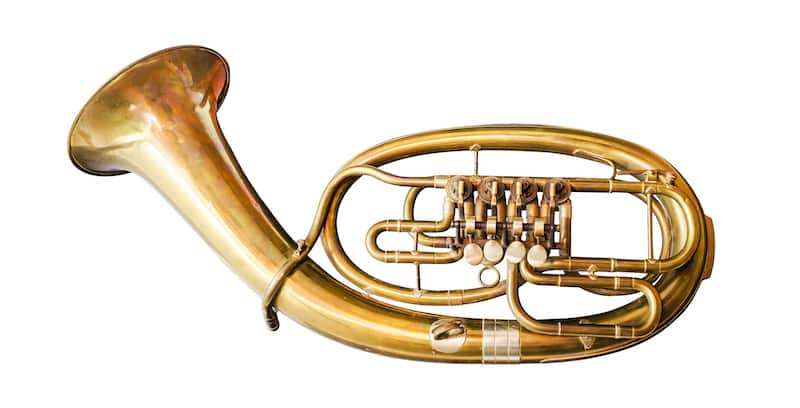
Everything about the Wagner Tuba these days is controversial, from its inventor, famous German composer Richard Wagner who is occasionally persona non grata, to its name.
Why? Well, the Wagner tuba isn’t really a tuba, arguably, it’s actually a type of french horn.
Wagner invented the would-be tuba during his exile to Zurich in 1853.
He needed a brass instrument that could do justice to the Valhalla theme in Das Reingold, the first opera of The Ring Cycle, and the existing instruments weren’t doing the job.
Enter the Wagner tuba. Smaller than the bass tuba, the instrument tries to unify the brass section.
It also carries echoes of Nordic horns, making it doubly appropriate as the instrument of choice for The Ring Cycle.
12. Glockenspiel
The glockenspiel looks a bit like a miniature piano.
Like a piano, it has black and white keys, and as a piano, those keys sound when hit by a hammer.
Unlike the piano, the hammer part of the glockenspiel is external.
That means that in practice, appearance aside, the glockenspiel is played like a xylophone.
Its high, bell-like chime is something else this percussion instrument shares with the xylophone.
These similarities are aptly described through the translation of glockenspiel, which is something along the lines of ‘ringing bells.’
The glockenspiel is played using two metallic mallets to hit the keys.
On occasion, these are swapped for rubber mallets to create a softer sound.
Perhaps the most famous use of the glockenspiel occurs in Mozart’s Der Zauberflöte, where it is used to play Papageno’s bird-catching motif.
13. Daxophone
If you’ve ever made music by rubbing a protruding ruler against your desk, then you’re familiar with the daxophone.
In fact, you’ve gone so far as to improvise one.
The daxophone is a vibrating idiophone.
But the idiophone best-known to untrained ears is the piano, which creates its vibrations when the key strings hit internal hammers.
The daxophone has no hammers.
Instead, it creates the vibrations that produce sound through fiction.
The most intriguing thing about the daxophone is that even minor changes to the wood affect its sound, from polishing to knots to resins.
The heart of the instrument is a vibrating tongue piece.
Everything around the tongue helps vibrate it and modulate those vibrations.
Despite the lack of strings, players bow the daxophone to make it sing.
Summary of German Instruments
German musical instruments have a long and varied history.
The majority derives from the zither, cittern, or both though this is not exclusively the case.
Many instruments figure prominently in the German folk tradition, however, they’re flexible and also crop up in classical music and other genres.
The result is a richly varied national musicality.

